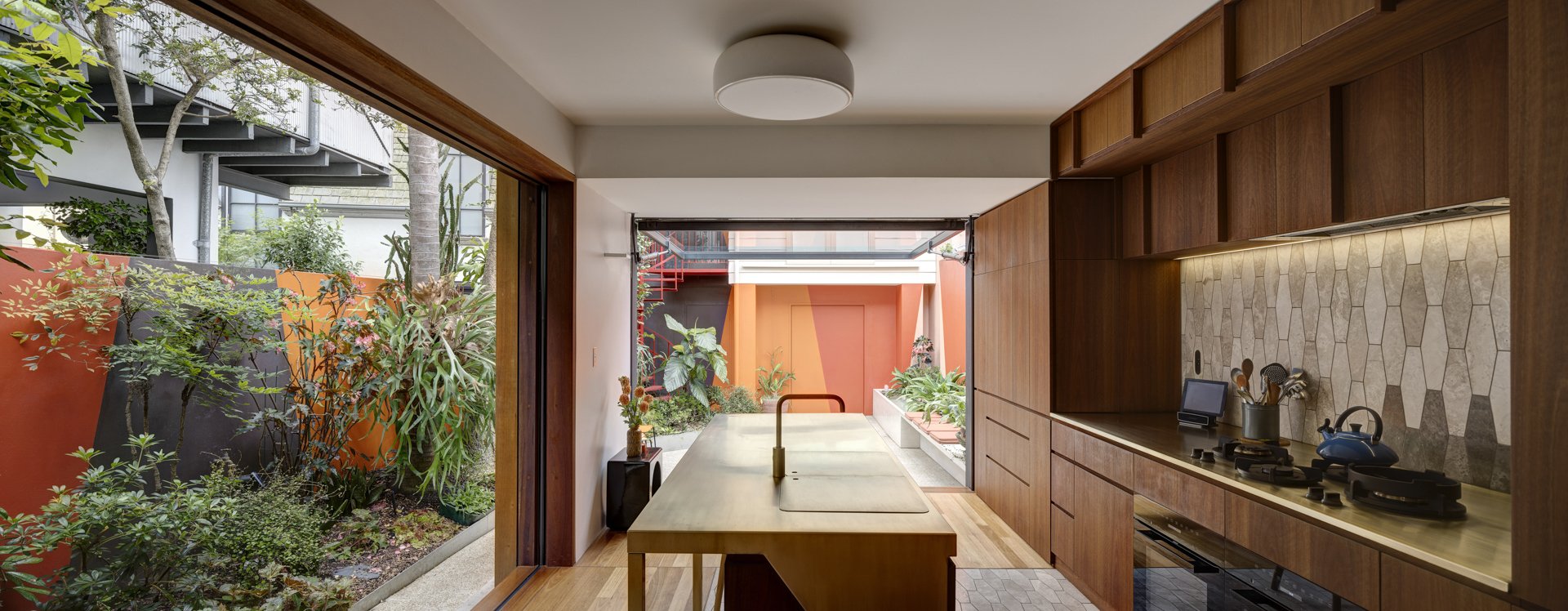ARCHITECTURE AND THE READYMADE
Baroness Elsa von Freytag-Loringhoven, Enduring Ornament, 1913
Marcel Duchamp, Bottle Rack, 1914
PLACE BASED COLOUR DESIGN IS A RETROFIT STRATEGY
I was in Melbourne recently to attend the Design Speaks Symposium “Readymade: Retrofit, re-use and replicable strategies for housing”. The concept of the Readymade emerged from the Dada art movement. In 1913, the first readymade sculpture exhibited was by the Baroness Elsa von Freytag-Loringhoven. Called “Enduring Ornament” it was a rusted iron ring she found on the way to her wedding. (Marcel Duchamp’s ‘Bottle Rack’ was exhibited a year later, although he is believed to have first used the term ‘readymade’).
Freytag-Loringhoven's work, and the Dada art movement questioned the very nature of what society considers art. Her use of found objects presented as a work of art, demanded that the viewer consider the divide between high and low culture, between everyday objects and fine art, and the role of the artist not as original creator but as appropriator.
Good colour design is “what lands, it’s what makes a space memorable, and it shows that someone cares.”
Rachel Nolan, Kennedy Nolan Architects
The point of the readymade was to disrupt standard notions of beauty.
Dada sought to critique the commodification of art objects, and the presenters at the READYMADE symposium were engaging in a critique of Australia’s unsustainable commodification of housing. By applying the concept of the Readymade to our older housing stock the architect can become an ‘invigorating force’ of otherwise overlooked material (for example, the thousands of ‘three storey walk-up’ apartment blocks in our cities and towns.)
Architects Rachel Nolan (Kennedy Nolan), and Jade Whittaker with Ali Whelan (Breathe Architects), gave excellent presentations on their apartment retrofit projects. Where cost efficiency is paramount, and the need for affordable, energy-efficient housing is urgent, designers have to constantly focus on what was ‘sufficient’. Rachel Nolan quoted Dieter Rams; “Good design is as little design as possible”.
Wilam Ngarrang Retrofit, Communal laundry with salvaged tiles. Architects: Kennedy Nolan. Builder: Wilderness Building Company. Photo (detail): Eve Wilson
What role does colour play in retrofit?
Recognising the need for these apartments to appeal to a new generation of residents, Rachel spoke eloquently on ‘the importance of colour’, noting that colour ‘does some seriously heavy lifting’, and acknowledging the power of colour to transform spaces is invaluable in retrofit projects.
She said good colour design is “what lands and makes a space memorable, it shows that someone cares.” Indeed! I was nodding vigorously. My approach to colour design, and in particular what I call Place Based Colour Design is an invaluable tool when embarking on retrofit and adaptive reuse projects. Colour is a master mediator and can be used strategically to marry or differentiate the old and the new, and to bring them into a new dialogue. There’s more than one way to approach retrofit, but there’s no doubt in my mind if you want to transform older buildings with low budget and high impact - you need a mastery of colour.
FURTHER READING
Wilam Ngarrang Retrofit https://issuu.com/findinginfinity/docs/230918_wilam_ngarrang_case_study
Want an insight into just how many of these 3 story walkups are ripe for renewal in our cities? Check out the extraordinary study led by Maryam Gusheh of Monash University.
Retrofit Strategies: Rethinking 20th century homes for 21st century living
https://www.monash.edu/mada/events/2023/retrofit-strategies-rethinking-20th-century-homes-for-21st-century-living
Read more about the wonderful Baroness van Freytag-Loringhoven
https://www.theartstory.org/artist/von-freytag-loringhoven-elsa/
Don’t miss the next Design Speaks Symposium.




